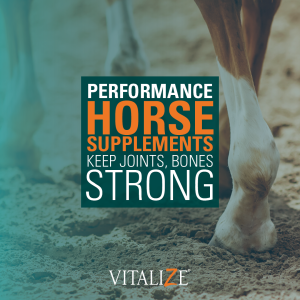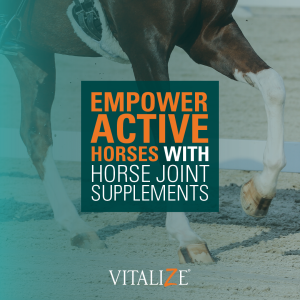
Heat Stress in Horses
Summer is still months away, but Mother Nature doesn’t know that. The temperatures are already climbing, and just like humans don’t enjoy heat and humidity, your equine companion also has a certain threshold for heat.
Horses have a natural ability to handle extreme temperatures when kept within the upper and lower limits of their comfort zone, known as the “thermoneutral zone.” This means horses can maintain a normal body temperature without expending excess energy for heat dissipation or generation when the temperatures are between 40- and 80-degrees Fahrenheit.
Once temperatures reach 80 degrees or hotter, horses will likely experience heat stress. Heat stress occurs when the horse’s normal cooling mechanisms are not able to easily overcome the heat and humidity in the environment. If left untreated, the process of heat stress can lead to heat stroke, which can be life-threatening. But how can you tell? Here’s what you should know about heat stress in horses.
Signs of Heat Stress in Horses
Watch for these 6 tell-tale signs of heat stress in horses when temperatures heat up or during heavy work in the summer.
1. Excessive Sweating
Horses, like humans, use a cooling process where moisture evaporates from the skin, referred to as sweating. Sweating is a good thing. However, if your horse works up a rich lather, they may be working too hard to remain cool, which is a sign to stay alert in the heat. Excessive sweating (hyperhidrosis) may indicate heat stress. Horses might appear drenched in sweat, with sweat dripping from their body, particularly in areas like their neck, chest, flanks and hindquarters.
Important note: Sweat has a harder time evaporating during high humidity levels. That is why it is vital to consider the heat index, not just temperature alone when caring for your horse during summer.
2. NO Sweating
Conversely, some horses suffer from anhidrosis. Anhidrosis occurs when horses do not sweat adequately, causing a build-up of internal heat and increased body temperature. This can sometimes reach upwards of 110° F.
While the direct cause of anhidrosis is unknown, many experts associate it with the over-stimulation of sweat glands due to environment or exercise stress hormones. This overstimulation causes the glands to shut down. Others suggest it could be a byproduct of metabolic or hereditary conditions or a lack of electrolyte replenishment. Whatever the cause, this insufficient body temperature regulation decreases the horse’s ability to perform and also puts it at risk of hyperthermia and heat stroke.
If you have a non-sweater, you should always be on high alert for your horse’s health in the heat.
3. Elevated Respiratory & Heart Rate
It is challenging to see an increase in heart rate without taking vitals, but an increase in respiratory rate is usually easy to spot. Look to see how your horse’s nostrils are flaring as it breathes. If your horse is flaring its nostrils for longer than normal during cool-down, it could be at risk for heat stress.
Heat-stressed horses may exhibit an elevated respiration rate, with rapid or labored breathing even at rest. Increased respiratory effort helps horses expel excess heat and maintain thermal equilibrium.
Always pay attention to how hard your horse is breathing before starting training again or heading back to the barn. In the most stressful, hot days, add a couple more laps at the walk to help your horse cool down after working.
4. Dehydration
When your horse is under heat stress, it may become easily dehydrated due to excessive sweating. During the hottest days, the water requirement for horses increases from 6-10 gallons to nearly 15 gallons per day. Supplement a product with salt, sugar or added electrolytes to encourage adequate drinking to help maintain the water requirements under these conditions.
Signs of dehydration include dry, tacky gums, sunken eyes, delayed skin tenting and concentrated urine with reduced frequency of urination.
5. Decreased Gut Sounds
Because your horse’s body is using the sympathetic nervous system (aka the “fight or flight” response) to address its high heart and respiratory rate, its parasympathetic nervous system (aka the processes used at rest, such as digestion) slows down. During prolonged periods of heat stress, your horse could show decreased gut sounds, putting it at a higher risk for colic and digestive upset.
6. Heat Stroke
If the signs are unaddressed, heat stress in horses can worsen into heat stroke. This is a more serious condition often first shown as stumbling, dizziness or depression in the horse. If you see this behavior, contact your veterinarian immediately.
Turn to Vitalize® Blazin’
Since heat stress in horses can be harmful to their health and well-being, monitoring the outdoor temperature, humidity and your horse’s activity level in these summer months is crucial. Fortunately, Vitalize® has also created an innovative product to help manage the impact of heat stress in horses.
Vitalize® Blazin’ is a liquid product for horses designed to support normal recovery from heat stress and exertion. It contains antioxidants to reduce damaging free radicals caused by exertion and heat and AO-Biotics® Amaferm®, a prebiotic research-proven to enhance digestibility. Additionally, it promotes cellular hydration and water retention.
A Safe Solution for Heat Stress in Horses
Vitalize Blazin’ is one of four Vitalize products that have been Clean Sport Tested and evaluated by a third-party lab. That means they do not contain any prohibited substances for horses that compete under FEI, USEF or IFHA rules. Furthermore, Vitalize products carry the National Animal Supplement Council (NASC) seal, meaning their quality is also third-party confirmed.
To obtain permission to display the NASC Quality Seal, our Vitalize products and marketing materials must successfully pass an independent third-party audit every two years.
All Vitalize Products demonstrate ongoing compliance with the following criteria:
- Have a quality control manual in place that provides written standard operating procedures (SOPs) for production process control, which helps ensure the company is providing a consistent and quality product.
- Have an adverse event reporting/complaint system in place to monitor and evaluate products in real time.
- Comply with stringent labeling guidelines for all products and all forms of labeling.
- Product labels should include any specific warnings and caution statements for particular ingredients recommended by the Food & Drug Administration’s Center for Veterinary Medicine (FDA-CVM) and the NASC Scientific Advisory Committee.
- Submit to random product testing by an independent lab to ensure ingredients meet label claims.
- Participate in mandatory annual training facilitated by NASC.
Don’t Just Take Our Word for It
Vitalize customers from across the country rely on Vitalize Blazin’ to help prevent heat stress in horses that they are riding or competing with. They know that a healthy, stress-free horse is one that will perform to its potential.
Read what these customers have to say about their experiences:
Melanie, a barrel racer
“I bought some Blazin’ for our barrel horses that we are currently hauling and run on Lasix, just to help combat the heat. We had a mare stop sweating a week ago. She has been getting it daily since then, and today, we have full sweat. I am so thankful we have this in the barn!!”
Darby Pease, professional show jumper
“I’ve seen really good results with Vitalize® Blazin’. My jumping horse is a big, lazy horse and just everything about him is slow. I’ve tried so many energy products just to give him a little more oomph, and some things will work a little bit and some things don’t work at all, but Blazin’ has worked really well on him. He responds super well to it, and I’ve actually used it in all different types of weather.”
“In hot weather, it gives him some extra energy and helps him recover so much faster after rounds and between the first round and the jump-off. In cold weather, it gives him extra energy, too. It just gives him a little bit extra fire and overall makes him feel better. I give him one or two pumps on top of his feed morning and night, and he eats it great.”
“He’s kind of picky, but he does really like it, which is good. It’s helped him reach his potential because he has enough energy to get around the big jumps.”
Elyse Hart, Dressage rider
“In addition to the heat, the humidity in California has been extremely high for us when it’s usually not so severe. I knew I needed to find a way to help Bob with the warm weather and I found Vitalize Blazin’! When Bob is tired, he can get sluggish, but can still be spooky and reactive. Because of this, I was not looking for an energy supplement. Among the several reasons I like Blazin, what I’ve really enjoyed is Bob having what I’ll call “good energy” during our rides.
“It feels more like extra stamina and endurance, but Blazin does not necessarily make him spicy—we’ve already got enough of that! Blazin feels like a way I can thank Bob and continue to help him have a healthy response to heat so we can keep up with our work.”
Codi Harrison, professional Dressage rider
“Bossco honestly feels better. Usually, in the heat, he can be a little sluggish and unmotivated, but even riding in the heat of the day, he stays fresh.”
Be Proactive with Vitalize
It’s important to address heat stress in horses as soon as you identify it. But the best way to address the risk is to be proactive with preventative care.
Vitalize Blazin’ is available in two convenient sizes, both a 32- and 64-ounce bottle with easy-to-use pumps. Use as needed during elevated temperature or exertion and administer 2 to 4 pumps (30 – 60 mL) per day based on the intensity of heat and exercise.
For best results, split the dose between morning and evening feedings. The best results will be obtained after at least three consecutive days of use.
Do you want to learn more about other Vitalize products for horse gut and joint health? Read more of our educational blogs. Or are you interested in learning more about how to support your horse year-round? Sign up for our newsletter.
Get your Vitalize Today
To purchase Vitalize Blazin’ or any of our Vitalize products, you can shop online or purchase from one of our online retailers. Perhaps you’d like to support a local retailer? Find a BioZyme dealer near you.

